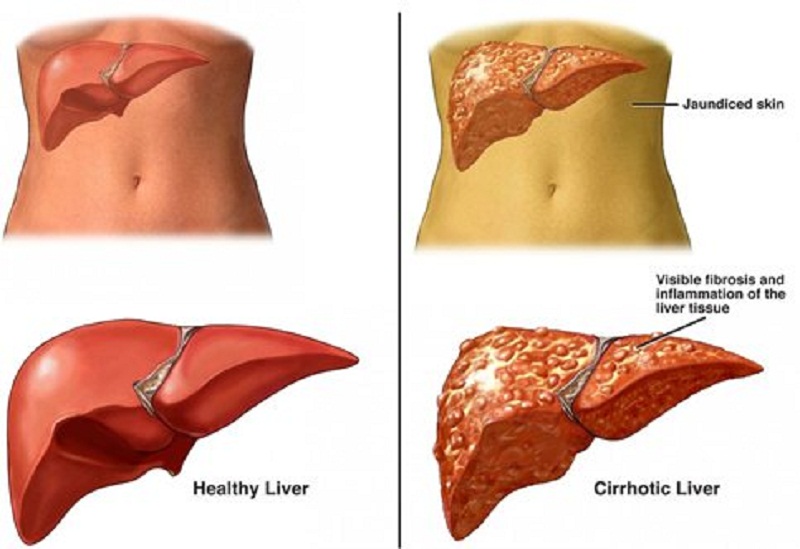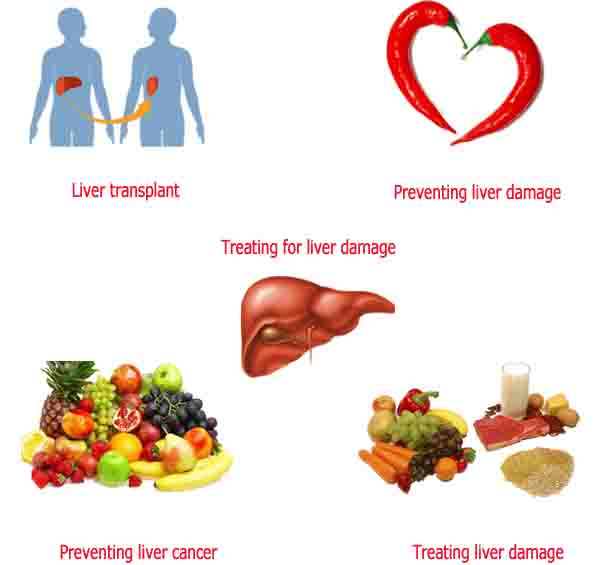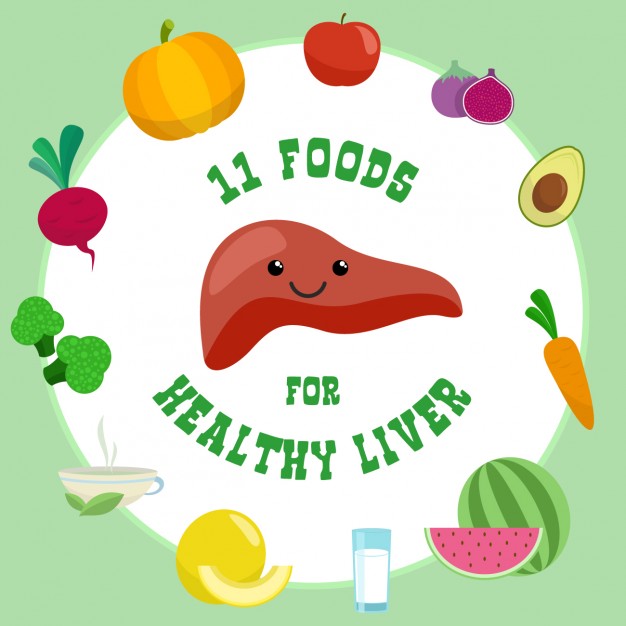Alcoholic Liver Disease
Alcoholic liver disease is a term that encompasses the liver manifestations of alcohol overconsumption, including fatty liver, alcoholic hepatitis, and chronic hepatitis with liver fibrosis or cirrhosis.
It is the major cause of liver disease in Western countries. Although steatosis (fatty liver) will develop in any individual who consumes a large quantity of alcoholic beverages over a long period of time, this process is transient and reversible. Of all chronic heavy drinkers, only 15–20% develop hepatitis or cirrhosis, which can occur concomitantly or in succession.
The mechanism behind this is not completely understood. 80% of alcohol passes through the liver to be detoxified. Chronic consumption of alcohol results in the secretion of pro-inflammatory cytokines (TNF-alpha, Interleukin 6 and Interleukin 8 ), oxidative stress, lipid peroxidation, and acetaldehyde toxicity. These factors cause inflammation, apoptosis and eventually fibrosis of liver cells. Why this occurs in only a few individuals is still unclear. Additionally, the liver has tremendous capacity to regenerate and even when 75% of hepatocytes are dead, it continues to function as normal.


Women are twice as susceptible to alcohol-related liver disease, and may develop alcoholic liver disease with shorter durations and doses of chronic consumption. The lesser amount of alcohol dehydrogenase secreted in the gut, higher proportion of body fat in women, and changes in fat absorption due to the menstrual cycle may explain this phenomenon.
Hepatitis C infection: A concomitant hepatitis C infection significantly accelerates the process of liver injury.
Genetic factors predispose both to alcoholism and to alcoholic liver disease. Both monozygotic twins are more likely to be alcoholics and to develop liver cirrhosis than both dizygotic twins. Polymorphisms in the enzymes involved in the metabolism of alcohol, such as ADH, ALDH, CYP4502E1, mitochondrial dysfunction, and cytokine polymorphism may partly explain this genetic component. However, no specific polymorphisms have currently been firmly linked to alcoholic liver disease.
Iron overload (Hemochromatosis)

According to the Ayurvedic system, the disease is caused by imbalances between the three types of physical energy, or doshas. Each of the doshas – vata, pitta and kapha – is present in varying degrees in each of us, though usually one is dominant. Vata is the energy of creativity, intellect and spirituality. In the physical system, it is responsible for circulation and heartbeat. Vata types are physically thin and fine-boned with dry hair and skin. Pitta forces regulate digestion and elimination, including liver function, and pitta types are characterized by sensitive skin and hot tempers. Kapha energy controls growth, moisture and the immune system. Kapha types tend to gain weight easily, have oily skin, abundant hair and calm, loving personalities.
From Ayurvedic perspectives, Liver Cirrhosis reflects extreme aggravation of pitta dosha. Since liver is a seat of pitta, aggravated pitta affects the liver function and later vitiates other doshas as well. Rasa and rakta dhatus are particularly intoxicated while other dhatus too become weak. Almost all functions of pitta such as digestion of food, the complexion of skin, feeling of hunger, production of blood etc get considerably hampered. Thousands are leading a better life after Liver Cirrhosis treatment at Jiva.

Certain foods have the ability to boost the health of your liver and provide you with detoxifying effects. In general, you should follow a pitta-pacifying diet and increase the number of vegetables and fruits you consume. You should also introduce high-fibre plants such as whole grains and legumes to your diet.
In case you’re looking forward to creating a detailed diet plan, here are the top liver-friendly foods to consider:
